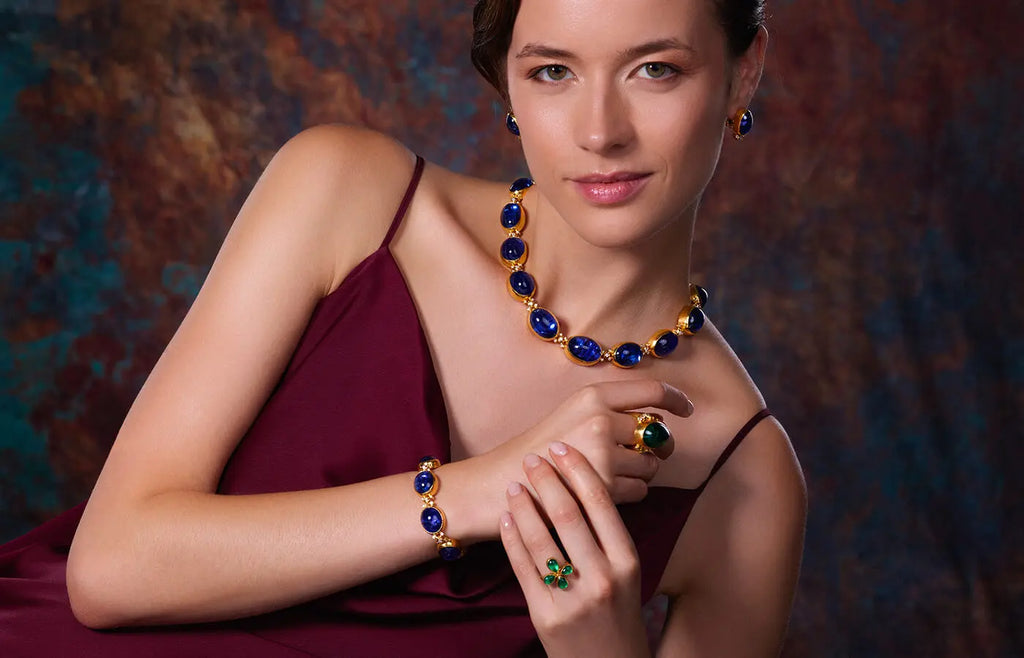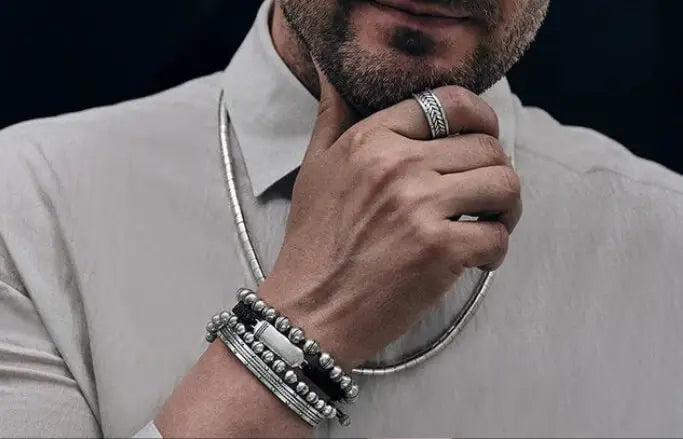There’s no doubt you’ve seen – or maybe even owned – a turquoise piece of jewelry. The opaque, blue-green gemstone is ubiquitous and often synonymous with Native American jewelry and art. Ancient civilizations believed that the mineral provided positive energy and protection, and had healing capabilities. While it’s been treasured for centuries throughout Asia, Europe, Africa and North America, the availability for authentic turquoise is waning while its popularity and allure remains resilient.

Where Does it Come From?
Turquoise is a mineral, comprised of copper, aluminum, phosphorous and water. It requires a dry climate to form and is mainly produced in China, Chile, Egypt, Iran, Mexico and the southwestern United States. Much of the turquoise mined today requires some type of treatment to make it durable enough for jewelry and to enhance its color. In its natural state, turquoise often contains dark veins running through it, an effect from its formation. This veining is referred to as a matrix and may appear in black, yellow or brown. When the lines are thin, they are often referred to as spider-webbed. Such veining is evident in GURHAN’s Rune gold stone cocktail ring with a black matrix and the sterling silver turquoise stone ring with white veining.
Types of Turquoise
There are nearly 30 different kinds of turquoise. The types typically depend upon the color of the stone, which is determined by the mine at which it is produced. The color variations are obvious when looking at this turquoise pendant necklace with diamond and this turquoise statement bracelet. Among the types:

In the Southwest United States, turquoise comes in a variety of colors with veining ranging from minimal to abundant. The types include Bisbee, which is deep blue with black veins; Kingman which ranges from light to dark blue as well as green.
Among the most revered type is Sleeping Beauty turquoise. Arizona and Nevada are the primary producers of Sleeping Beauty turquoise in the world, albeit in limited quantities. Its scarcity and high quality make it extremely valuable. It has been likened to the blue of a robin’s egg and it offers consistency in color and clean appearance. It has very little to no veining and therefore is one of the most sought-after types of turquoise. It’s one of the types that Gurhan uses in his hand-crafted gold turquoise jewelry collection.
Persian turquoise, mined in modern day Iran, is typically deep sky blue and is harder than other types of turquoise. There is generally no matrix on the stone.
Golden Hill turquoise is mined in Kazakhstan and varies from other types in that its color is close to a periwinkle blue and is a hard stone. It is also characterized by its natural, polished domed surface. It usually does contain veining.
Chinese turquoise is another highly regarded type of the mineral and accounts for a significant portion of turquoise available. Like turquoise that is mined in the Southwest United States, Chinese turquoise is found in colors from sky blue to spring green and may or may not have a matrix. It is another prime source used in Gurhan’s one-of-a-kind turquoise rings, necklaces and bracelets.
Buyer Beware: Stabilized vs Reconstituted Turquoise

It’s believed that nearly 90-95% of turquoise is manipulated with resin or plastic, dyed, painted, enhanced, stabilized, reconstituted or just plain fake.
Stabilization is an industry accepted process in which the stone is protected with a coating. Turquoise is a naturally soft stone and the stabilization provides more durability.
On the other hand, reconstituted turquoise is formed from fragments of stones that are crushed into chalk and solidified using epoxy or plastic filler. This is typically of a lower value than stabilized stones. Gurhan does not use reconstituted turquoise. Due to the scarcity of high-quality turquoise, some jewelers and collectors perceive it to be as valuable as diamonds and more so than gold.
How to Care for Turquoise Jewelry
Turquoise is a moderately tough stone. While light may not harm its appearance, high heat could discolor it and cause damage. Because of its porous composition, keep it away from oils, lotions and alcohol. Turquoise should not come into contact with metal or it could oxidize (rust). Use a dry soft cloth or warm water and mild soap to clean your gem. As Turquoise mines close and supply lessens, these tips will ensure your turquoise jewelry will keep their splendor.





 Antiquities
Antiquities Hoopla Collection
Hoopla Collection Gold One-of-a-Kinds
Gold One-of-a-Kinds Rain Collection
Rain Collection The Oyster Collection
The Oyster Collection
Comments
Sheila said:
Wow, I didnt know all this information about turquoise. Thank you!
June 02, 2023
Anonymous said:
Beautiful!
March 14, 2023